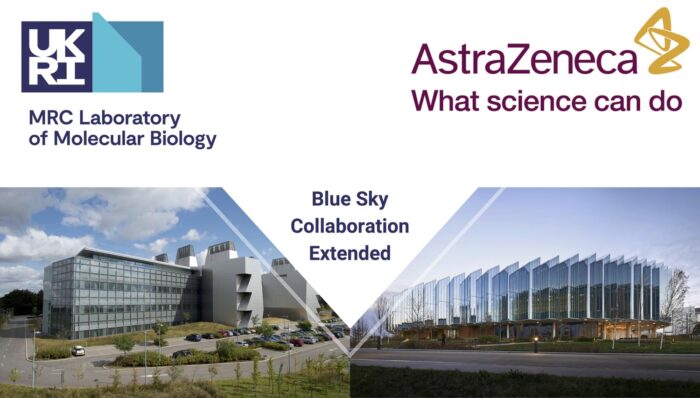
The LMB have agreed to an additional $4millon (in the region of £3.2million) funding to extend the Blue Sky research collaboration with AstraZeneca beyond 2022.
The collaboration, launched in 2014, has supported a range of pre-clinical research projects which encourage ‘blue sky’ thinking around fundamental biology and disease.
The impact of the collaboration has been significant since the launch, with some notable project discoveries listed below.
Scientists find circadian rhythms in heart cells help to change heart function
Researchers in John O’Neill’s group, in the LMB’s Cell Biology Division, and Peter Newham at AstraZeneca discovered a mechanism whereby circadian rhythms within heart cells help to change heart function.
The first 3D structure of ATM
Researchers in Roger Williams’ group, in the LMB’s PNAC Division, and Structural Biologist Chris Phillips at AstraZeneca revealed the first three-dimensional structural model of ataxia-telangiectasia mutated (ATM), a key regulator of the DNA damage response (DDR) signalling pathway and target for cancer therapies.
Quality control in cancer cells revealed
Researchers in Manu Hegde’s group, in the LMB’s Cell Biology Division, and then Associate Principal Scientist from AstraZeneca Ana Narvaez uncovered one pathway responsible for disposing of unusable proteins that are produced in high quantity in cancer cells owing to their mutated and rearranged genomes.
Professor John Iredale, MRC Executive Chair said: “Since the formation in 2014, the Blue Sky initiative has provided researchers with the tools and technology to tackle some of the most difficult questions in fundamental biology and disease. Which is why we are thrilled to extend this important collaboration between the LMB and AstraZeneca.”
The extension of this collaboration will enable further innovative research which will build on the findings from scientists from the two organisations.
Jan Löwe, Director of the LMB, said: “We are extremely pleased that our innovative collaboration with AstraZeneca continues. Blue Sky projects will continue to deliver outstanding science and give us access to amazing people and resources. We consider Blue Sky to be the LMB’s flagship industrial collaboration and are very proud of the science it delivers.”
Sir Mene Pangalos, EVP BioPharmaceuticals R&D, AstraZeneca, said: “Understanding the biology of the disease is critical to developing the next wave of life-changing medicines for patients where there is still huge unmet need. The Blue Sky Collaboration with the MRC LMB epitomises the importance of academic and industry partnerships in helping turn science into medicine, and we are thrilled to be continuing this initiative.”